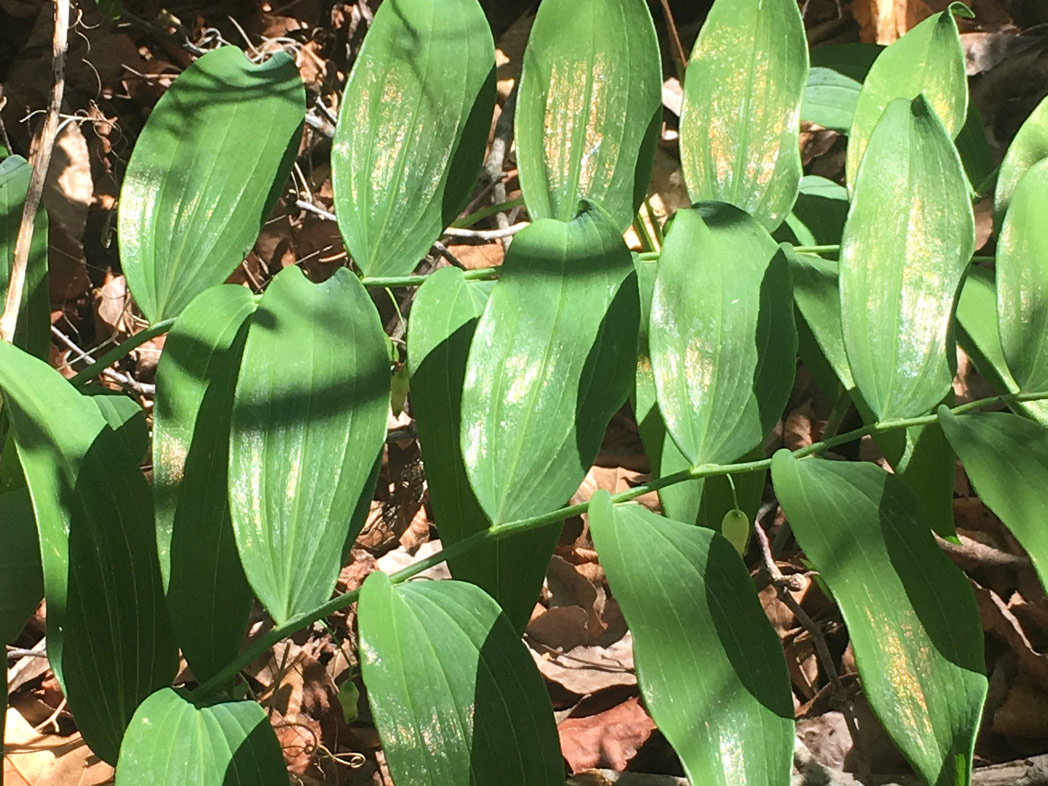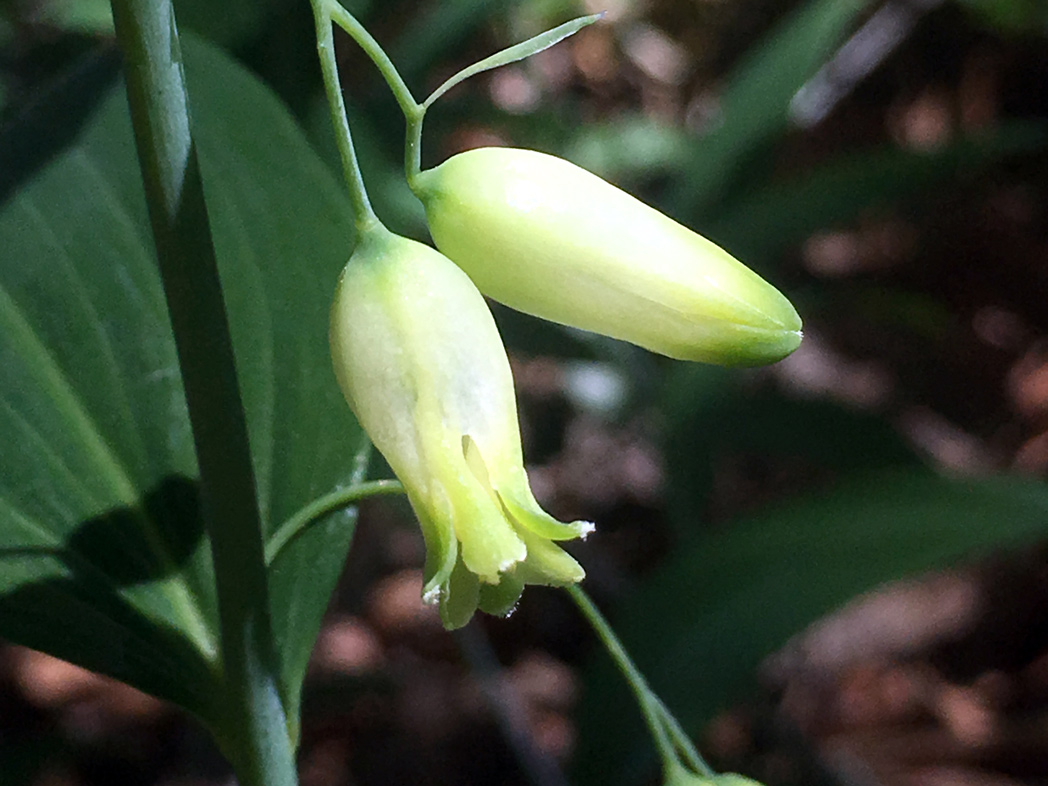Solomon’s seal
Pictured above: Solomon’s seal (Polygonatum biflorum) by Stacey Matrazzo. Click on terms for botanical definitions. View post as a PDF.
Solomon’s seal is a unique perennial wildflower. It typically blooms in spring in moist, shady habitats. Its flowers are greenish-white, tubular and pendulous or bell-like. They hang in pairs from the leaf axils and are often obscured by leaves. Stems are arching and tend to zigzag. Leaves are simple and oval to elliptic with parallel veination. They are alternately arranged. The leaf surface is bright green with a gold iridescence; the underside is whitish. Fruits are pea-sized berries that turn dark blue to black when ripe. They are eaten by a variety of wildlife.

The genus name Polygonatum comes from the Greek poly, or “many,” and gony (also gonato), or “knee,” and refers to the many jointed rhizomes. The common name is derived from scars on the rhizomes that are said to bear a resemblance to the ancient Hebrew seal of King Solomon.
Parts of Solomon’s seal are edible. Young shoots can be eaten raw or boiled. The starchy rhizomes were used by Native Americans to make bread. It also possesses a number of medicinal properties including anti-inflammatory and sedative. The rhizomes have been made into a tonic to treat gout and rheumatism.
Family: Ruscaceae* (Butcher’s broom family)
Native range: Some counties in North Central Florida and the Eastern Panhandle, as well as Escambia County
To see where natural populations of Solomon’s seal have been vouchered, visit florida.plantatlas.usf.edu.
Hardiness: Zone 8A–9A
Soil: Moist to wet well-drained soils
Exposure: Partial to full shade
Growth habit: 1–3’ tall
Propagation: Division, seed
Garden tips: Solomon’s seal is rarely available at nurseries that specialize in native plants. A non-native variegated form is more commonly sold at big box garden centers. To be sure you are getting the native species, visit www.plantrealflorida.org to find a nursery in your area.
*Some sources have reclassified the Ruscaceae family to Nolinoideae, a subfamily of the Asparagaceae family. However, the University of Florida Institute for Systematic Botany’s Atlas of Florida Plants (as well as other sources including the University of North Carolina Herbarium’s Flora of the Southern and Mid-Atlantic States) still list Ruscaceae as its own family and Solomon’s seal as a member.

